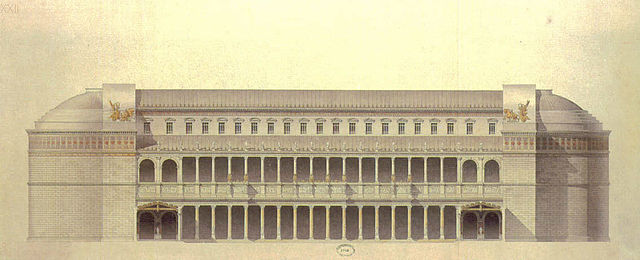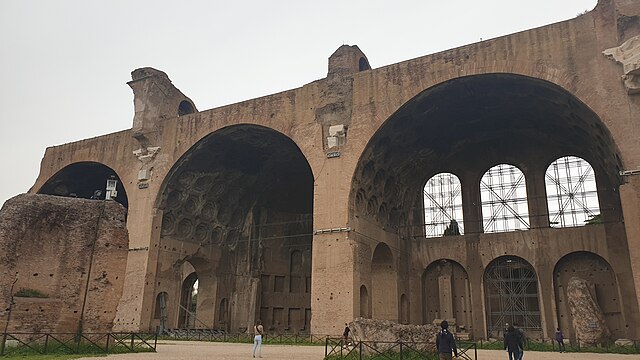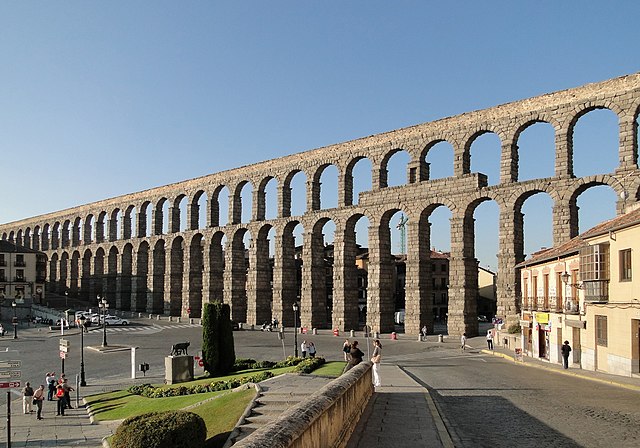In Ancient Roman architecture, a basilica was a large public building with multiple functions that was typically built alongside the town's forum. The basilica was in the Latin West equivalent to a stoa in the Greek East. The building gave its name to the basilica architectural form.
Digital reconstruction of the 2nd century BC Basilica Sempronia, in the Forum Romanum
19th century reconstruction of the 2nd century AD Basilica Ulpia, part of the Trajan's Forum, Rome
Ruins of Yererouk basilica 4th–5th century AD
Ruins of the late 5th century AD basilica at Mushabbak, Syria
Ancient Roman architecture
Ancient Roman architecture adopted the external language of classical ancient Greek architecture for the purposes of the ancient Romans, but was different from Greek buildings, becoming a new architectural style. The two styles are often considered one body of classical architecture. Roman architecture flourished in the Roman Republic and to an even greater extent under the Empire, when the great majority of surviving buildings were constructed. It used new materials, particularly Roman concrete, and newer technologies such as the arch and the dome to make buildings that were typically strong and well engineered. Large numbers remain in some form across the former empire, sometimes complete and still in use today.
Remains of the Basilica of Maxentius and Constantine. The building's northern aisle is all that remains.
The Colosseum, Rome, c. 70–80 AD
The Maison carrée in Nîmes (France), one of the best-preserved Roman temples, c. 2 AD
Aqueduct of Segovia (1st century AD), Segovia, Spain








